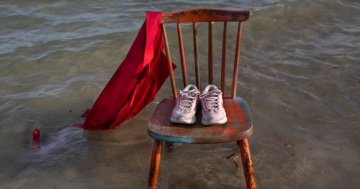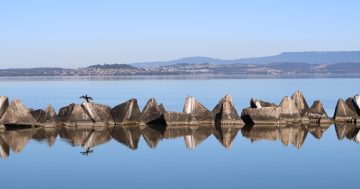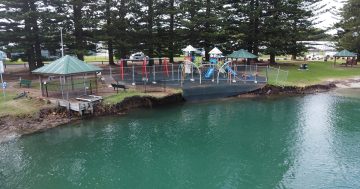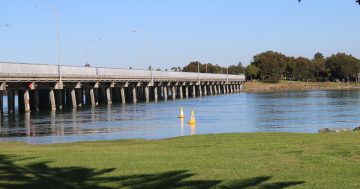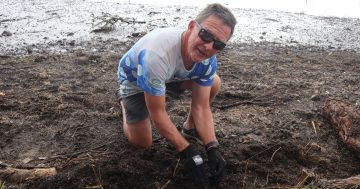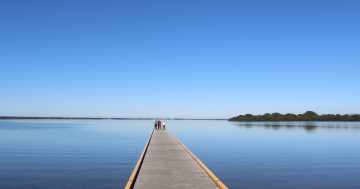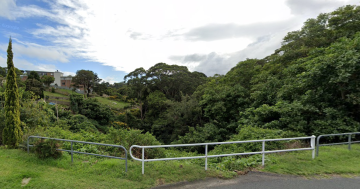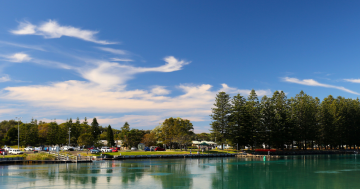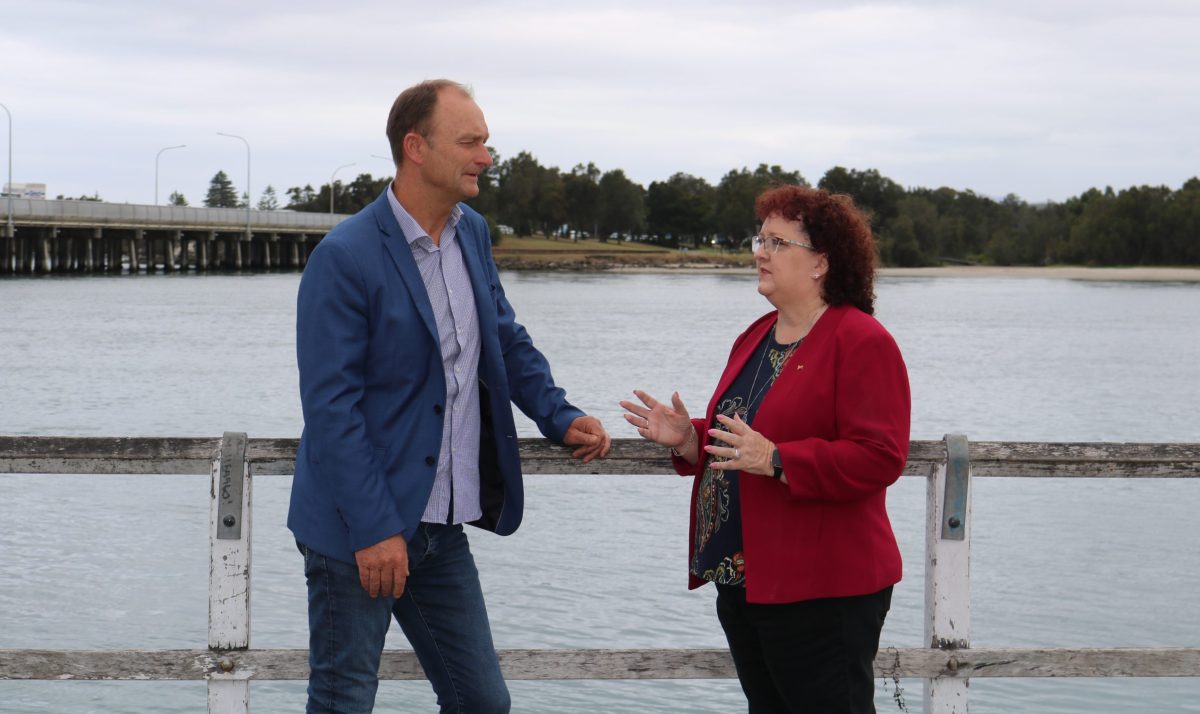
Shellharbour Mayor Chris Homer and Wollongong Mayor Tania Brown discuss the erosion problems at Lake Illawarra. Photo: Jen White.
Wollongong and Shellharbour councils are facing a multi-million bill to tackle the increasing issue of erosion created by the opening of Lake Illawarra in 2007.
The councils this week (18 November) launched the long-awaited Lake Illawarra Entrance Options Study, which suggests five possible options, ranging in cost from $15 million to $240 million.
However, with the ongoing effects of climate change, there is no guarantee that any solution will address the issue permanently.
Wollongong Lord Mayor Tania Brown and her Shellharbour counterpart Chris Homer have urged residents to provide feedback on the study before a decision is made on which option to adopt.
A list of more than 50 possible options has been shortlisted to five:
- Install a rock weir near Windang Bridge (a rock barrier built across the channel)
- A rock weir near the bridge with gates to manage flood impacts and increase tidal flushing when required
- Rock weirs at the western end of the channel across all three channels
- Return the lake to its natural state by removing both walls and undertaking large-scale sand nourishment.
However, all options come with a range of negative impacts, from a deterioration in water quality, upstream flooding and restrictions on boating access.
The former Lake Illawarra Authority opened the lake entrance in 2007 to improve the flow of water and help flush the lake.
In the years since then, the large volumes of water moving in and out of the entrance at tidal change have resulted in massive erosion.
The councils fear that without any intervention, the channel will continue to widen and deepen, with significant impacts on the built, natural and cultural assets around the foreshore.
The issue came to a head after the 6 April storms, when Wollongong Council was forced to demolish a playground on the Windang foreshore that was in danger of falling into the lake.
The options study says the tidal range in the lake will keep increasing for at least 120 years, meaning low tides will get lower and high tides will get higher.
“This will impact both recreation (such as boating in areas that are already shallow), as well as increasing impacts from flooding of foreshores and infrastructure from higher water levels,” the report says.
“Habitats like seagrass will no longer be able to grow in areas that become shallower, and foreshore habitat like saltmarsh will be inundated too often for vegetation to survive.”
Cr Brown said the councils were dealing with the legacy of opening the lake.
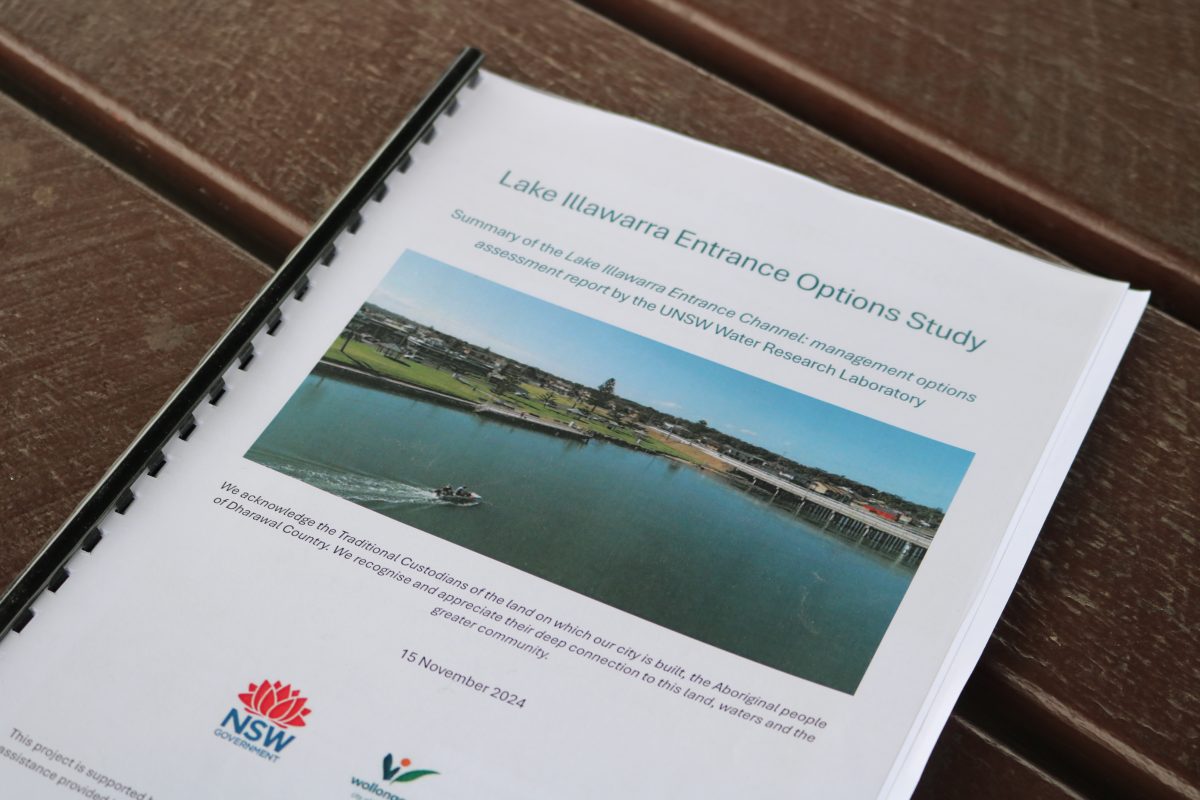
Residents are asked to provide feedback on the Lake Illawarra Entrance Options Study report. Photo: Jen White.
“We know with climate change, things are changing,” she said.
“When the lake was closed, people were very concerned about the stench that happened around the lake, but things have evolved.
“We’re now dealing with erosion that’s damaging infrastructure on both sides of the lake. So we need the technical expertise to advise us on the options, but we want to have the community as part of that process.
“We know our community values the lake, and we want to hear from the community about what they think is the best option.
“Our concern is that if we rush in and start to fix things along the foreshore, it’s only going to be washed away. So we’re wasting ratepayers’ money trying to fix things, not having a solution to the entrance.”
Both Mayors acknowledge that whichever option is adopted will come with a hefty price tag.
“I’d say we will need federal and possibly state assistance to get the project delivered,” Cr Brown said.
“But once we know what option the community wants, then we look at how we fund it, and certainly we’ll be looking for grant funding to assist both councils.
“We need to assess all of that feedback and then look at it with a technical lens, but we may also have to look at it with a financial lens and say, what can we actually afford to do?
“I would like to see whether there’s a mix of options, but that may be financially out of our reach.”
Cr Homer said it was important for the two councils to collaborate to address the “diabolical” problem.
“We know there’s an issue here, but we’re dealing with nature,” he said.
“It’s all about collaborating, getting on the front foot. We’ve got hydrologists on board, we’ve got experts, and now we want to hear feedback from the community to try and find a solution.
“At the end of the day, it’s a shared asset; it’s an important asset. Lots of people use the lake and coming into summer, a lot more people are going to be using it.”
Visit either Wollongong Council or Shellharbour Council to read the full study and supporting documents, find answers to some frequently asked questions and share feedback.
Drop-in sessions with the project team will be held on Friday, 29 November, at Warilla Barrack Point Surf Club from 1 pm to 3 pm, and on Saturday, 30 November, at Windang Senior Citizens Centre from 10:30 am to 12:30 pm. An online session will be held on Wednesday, 4 December, at 1 pm and 5 pm. Register online.








